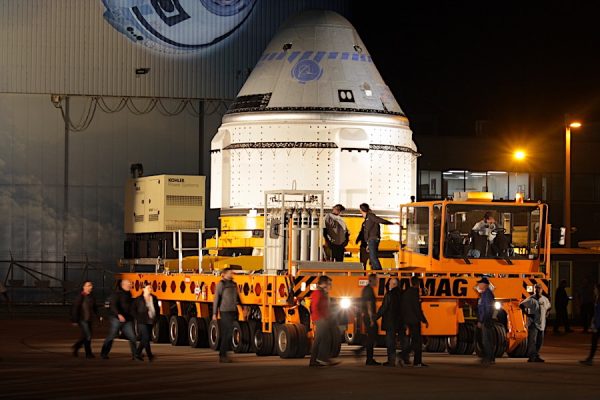No decision yet on additional test flight for Boeing Starliner spacecraft – Spaceflight Now
STORY WRITTEN FOR CBS NEWS & USED WITH PERMISSION

A review team studying software glitches and other miscues that cropped up during an unpiloted test flight of Boeing’s CST-100 crew capsule last December has made some 60 recommendations to make sure all the known shortcomings are addressed before the spacecraft is cleared for another flight, NASA managers said Friday.
During the December test flight, a major software error, coupled with communications dropouts, prevented a planned rendezvous and docking with the International Space Station. Another software mistake could have caused a catastrophic failure during the capsule’s return to Earth had it not been caught in time.
Douglas Loverro, director of spaceflight at NASA Headquarters, told reporters Friday he classified the incidents as a “high-visibility close call,” a formal designation that kicks off additional government review. In the meantime, he said the agency will make sure the review team’s recommendations are implemented.
It’s not clear how long that may take. Loverro said he did not yet know whether NASA might require a second unpiloted orbital flight test, or OFT, to verify the performance of all of the CST-100 Starliner’s systems, or whether Boeing could develop a rationale for pressing straight ahead to a crewed flight test, or CFT, to the International Space Station.
“Quite frankly, right now we don’t know,” Loverro said. “They have to now come back to NASA with a plan, how they’re going to go ahead and address all of those (recommendations). … We will do our own inspection of the results of their work. And then we’ll be in a position to decide whether or not we need another (uncrewed) test flight or not.
“So we are still a ways away from that. And I can’t even tell you what the schedule is for making that decision, because it’s very dependent upon what we see as Boeing’s corrective action plan and the thoroughness by which we believe that correction action plan has been implemented.”
Jim Chilton, senior vice president at Boeing Space and Launch, said the company will do whatever NASA asks. The company told investors earlier that it was taking a $410 million charge against pre-tax earnings in large part to cover the possible cost of another test flight.
“For us, it’s not that complicated,” he said. “Boeing stands ready to repeat an OFT (if required). … There’s not any intent on our part to avoid it. We just want to make sure that whatever we fly next is aligned with NASA’s preferences. And of course for all of us, crew safety is number one.”
Boeing and SpaceX are both building piloted astronaut ferry ships for NASA, under commercial contracts valued at up to $6.8 billion, to end the agency’s sole reliance on Russian Soyuz spacecraft to carry U.S. crews to and from the International Space Station.
SpaceX carried out a successful unpiloted test flight of its Crew Dragon spacecraft last year and is gearing up for a second test flight, this one with two NASA astronauts on board, in the May-June timeframe.
Boeing launched an unpiloted CST-100 Starliner capsule last December, but the spacecraft’s computer set its mission clock to the wrong time before liftoff, causing it to miss a critical orbit raising maneuver.
By the time flight controllers figured out what happened and worked around a communications problem to uplink corrective commands, the capsule was no longer able to carry out a planned rendezvous and docking with the International Space Station.
Boeing engineers then found and corrected another software oversight that could have caused the spacecraft’s service module, jettisoned prior to atmospheric entry, to crash back into the capsule.
The software problems made it into the spacecraft in part because Boeing did not carry out end-to-end tests of the systems in question before launch. Engineers relied on emulators that act as electronic stand ins in some cases that did not accurately reflect the behavior of flight hardware. In addition, some critical software was tested in segments that masked problems that otherwise might have been caught and corrected.
The mission elapsed timer error, the service module disposal problem and the communications glitches were the major issues encountered during the OFT mission, but the Independent Review Team looking into the incidents came up with some 60 recommendations for corrective actions.
NASA has not yet released a list of those recommendations.
“I want to make sure that everybody understands we at NASA are taking this very seriously,” Loverro said. “We’re going to make sure that at the end of the day, we can fly astronauts safely on Starliner.”






